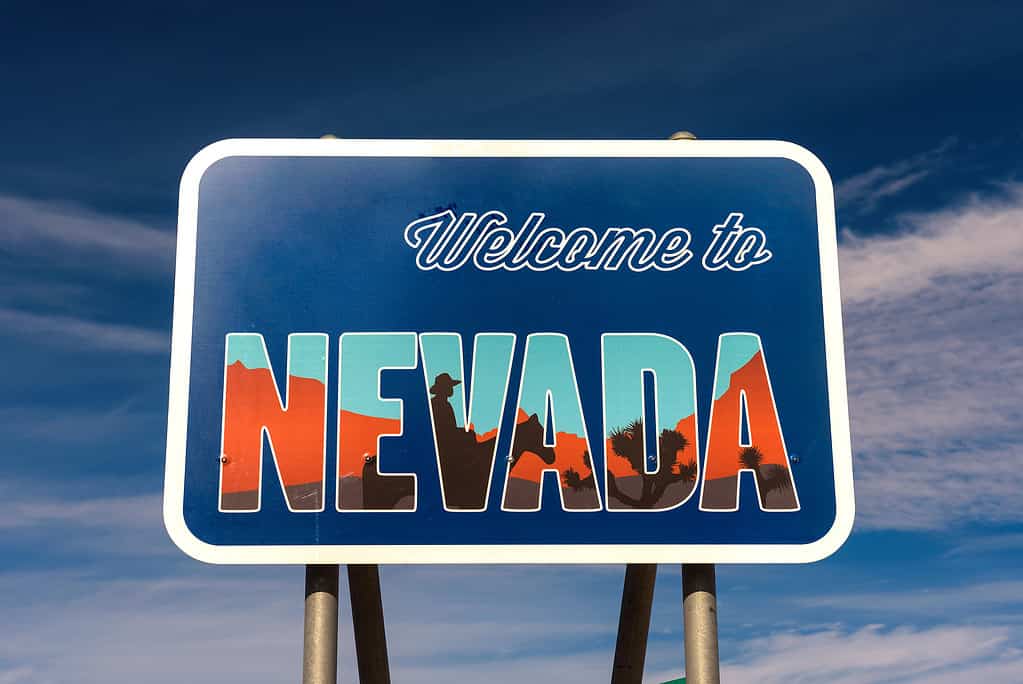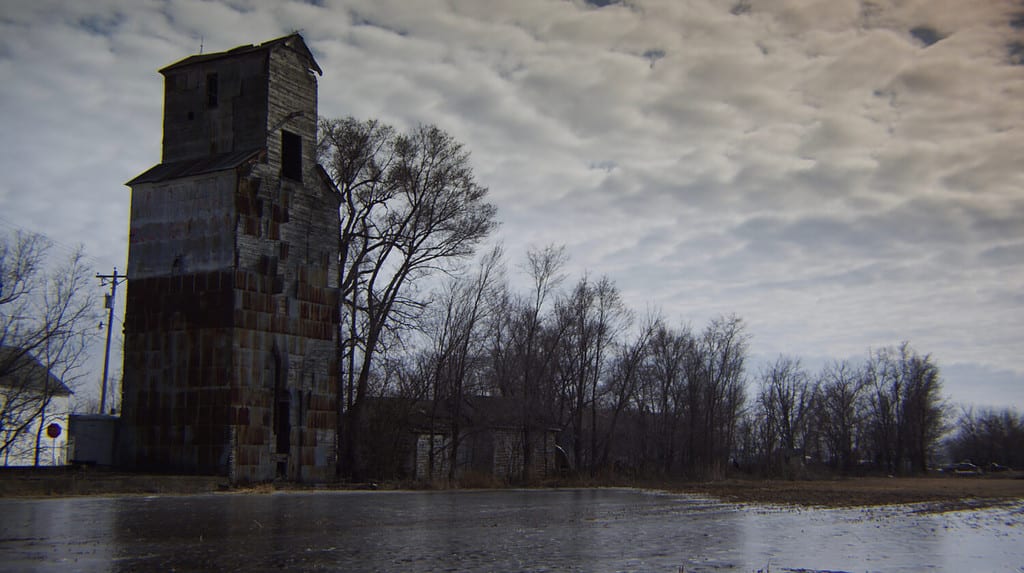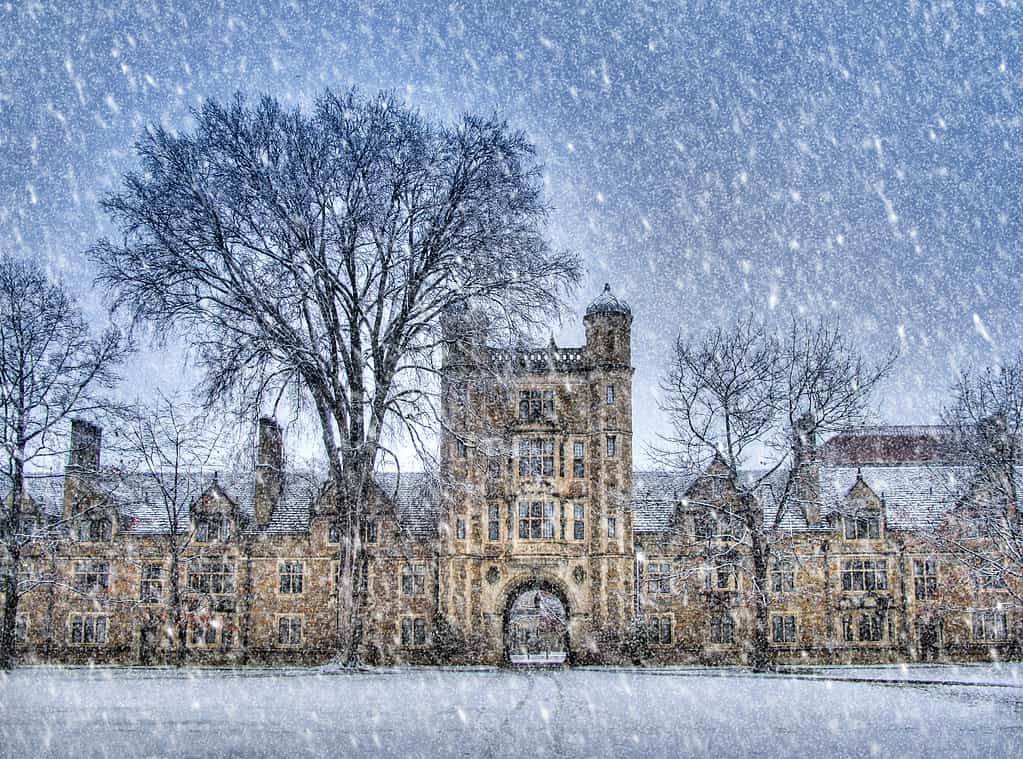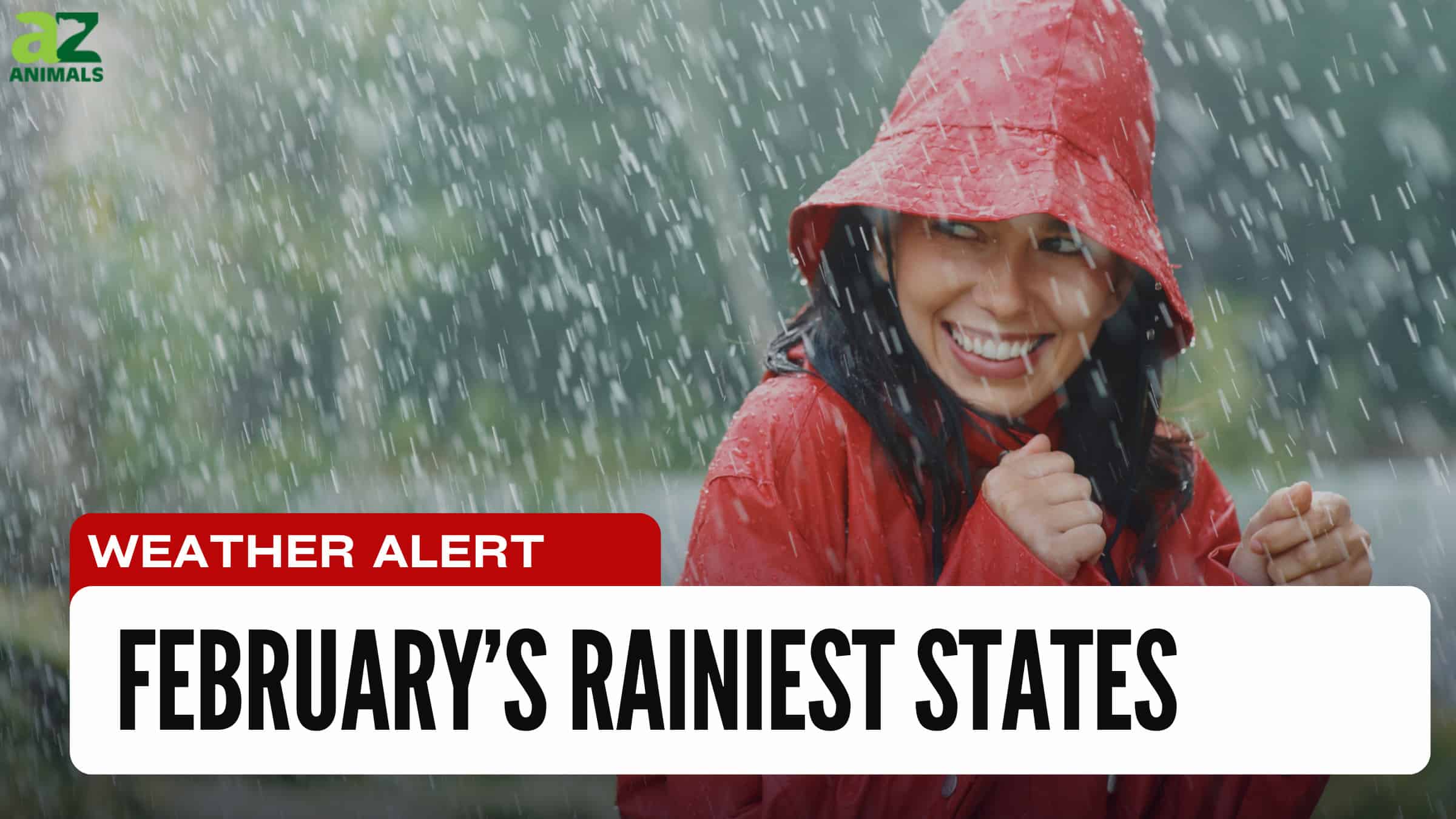February may be the shortest month of the year but it’s also the month that slowly starts to bring in warmer and brighter days. While some regions may still occasionally see piles of glistening snow, other regions slowly start to transition into a pleasant mix of mild sunshine and comfortable chill. For some other states, frequent thaws, overcast skies, and rain may remain the prevalent theme throughout much of February. This article will explore some of the states that get the most rain in February. The following list of the rainiest states in February has been compiled using the National Centers for Environmental Information (NCEI)’s February 2023 statewide precipitation rankings and the NOAA’s predictions for 2024.
It is important to note, however, that weather conditions can change from year to year. Even within individual states, local conditions tend to vary from one year to the next. The states and regions that get the most rain in February can, therefore, change depending on specific weather patterns of that year. This year, however, NOAA’s Climate Prediction Center (CPC) predicts that the Southern part of the USA and the Central Plains is likely to see well above average precipitation. The timing and distribution of precipitation will play a vital role in sustaining various human activities as well as aspects of the ecosystem. Rain and snow in the winter help feed regional water supplies, supporting agriculture, industries, and various other sectors.
States That Get The Most Rain in February
California

According to CNN news, the city of Los Angeles experienced its wettest day in almost 20 years on 4 February 2024 after it accumulated more rainfall than is typical for an entire month within just 24 hours.
©U. Eisenlohr/Shutterstock.com
In the state of California, located on the West Coast of the United States, the month of February can be cold and sunny with a fair chance of wind, rain, and cloudy skies. In cities like Los Angeles, February is typically the wettest month of the year, with rainfall averaging 3.64 inches. Rainfall in February this year is also anticipated to be well above average, especially in southern and central California according to NOAA’s Precipitation outlook for 2024.
Parts of Southern California including the Los Angeles area are already experiencing torrential rains thanks to an atmospheric river storm. The storm has brought on hurricane-force wind gusts, posing increased threats of landslides and floods throughout the state.
Nevada

According to NOAA’s Climate Prediction Center (CPC), the probability of a wet February for Nevada is more than 60 percent this year.
©miroslav_1/iStock via Getty Images
Nevada is considered the driest state in the United States. Average annual precipitation in the state is as low as 10.3 inches, with southern Nevada recording an even lower average of 7.1 inches. Northeastern Nevada, on the other hand, sees a slightly higher average of 12.85 inches. Generally, however, Nevada tends to receive more of its precipitation during winter, especially in the mountainous regions like the Sierra Nevada. The Sierra Nevada mountains extract moisture from winter storms that originate over the Pacific and are carried eastward by the jet stream.
Last year, the state of Nevada saw plenty of rain and snow in February in comparison to previous years. This was in consequence of a sequence of ten atmospheric rivers. According to National Weather Service data, the average precipitation in the state during the months of January and February combined was around 1.36 inches. This year again, NOAA predicts the probability of a wet February for the state.
Wisconsin

In the state of Wisconsin, precipitation during the month of February is usually a mix of snow, sleet, and rain.
©Jeremy Janus/iStock via Getty Images
Wisconsin typically experiences an average rainfall of approximately 1.69 inches in the month of February. According to CPC’s predictions, however, it is quite likely that the state will experience above-average precipitation in the first week of February this year. In 2023, the state received a notable amount of rainfall in February, measuring around 2.06 inches. This set a new record for the highest rainfall in the state for the month. According to the National Centers for Environmental Information (NCEI), the state experienced its fifth wettest February that year. The month’s unusual wetness concluded with an extremely heavy rainfall event that occurred on the 27th of February. On this day, the state experienced record amounts of rain, especially in regions in the far South. In the cities of Madison and Milwaukee, the precipitation levels even surpassed the normal monthly rainfall averages during February on that day.
However, given that the average temperatures in Wisconsin during the months of January and February can easily drop below zero degrees Fahrenheit, snow and ice often remain the most common form of precipitation in the state. The state sees significant snow accumulation during the colder months, contributing to its snowy landscapes and vast ski terrain.
Iowa

Iowa
, a state that is typically prone to pervasive drought experienced an exceptionally wet winter in February last year.
©Joe Taylor Cinema/Shutterstock.com
In the state of Iowa, drought is often considered a recurring and normal climate pattern. Precipitation in the state is moderate and averages about 34 inches per year. Despite this norm, February 2023 presented an anomaly as the state experienced one of its wettest winters on record. According to the National Weather Service, precipitation totals in the state were almost 1.25 to 2.5 inches above normal except for the city of Burlington, which only saw 2/3 inches above normal. This year again, there is an expectation of above-average precipitation in the state during February. This increase in precipitation will help alleviate drought conditions throughout the state.
Michigan

While occasional milder spells do sometimes bring rain to Michigan in February, snow remains the predominant form of precipitation in the state.
©tiny-al/iStock via Getty Images
Michigan in February does not frequently see rainfall. But in February 2023, the state saw above-average precipitation. It was the fifth wettest February on record for Kalamazoo which is regarded as the rainiest place in the state of Michigan. It was also the eighth wettest February on record for the city of Grand Rapids. On February 22nd and February 28th of that year, the state also experienced two ice storm events. The freezing rain left some households without power for almost eight days.
The February precipitation prediction for the state this year is not, however, entirely certain. The state may see freezing rain in late February. With freezing rain, sidewalks and roads in the state can become quite treacherous.
Minnesota

According to CPC’s predictions, the odds of a wetter-than-average February this year exceed 50% for certain parts of this region.
©Elisa Lara/iStock via Getty Images
In Minnesota, the average annual precipitation can range from about 18 inches in the far northwest to over 32 inches in the Southwest. The distribution of precipitation across the state is influenced by its proximity to the Gulf of Mexico. Areas closer to the Gulf, generally benefit from the influx of warm and moisture-laden air and, therefore, tend to receive higher average precipitation.
While February in Minnesota typically doesn’t see much rainfall, the impact of climate change has led to an increased occurrence of ice storms and winter rain in the state over the past 50 years. In 2023, persistent storm activity from December 2022 through February resulted in unprecedented precipitation. Rochester experienced its wettest Meteorological Winter, while St. Cloud and the Twin Cities marked their second-wettest winter. Duluth also observed its third-wettest winter on record in 2023. According to the information given out by NOAA’s Climate Prediction Center (CPC), this year again, there is an increased likelihood that the Central Plains, including parts of Minnesota, will see above-average precipitation.
Thank you for reading! Have some feedback for us? Contact the AZ Animals editorial team.








